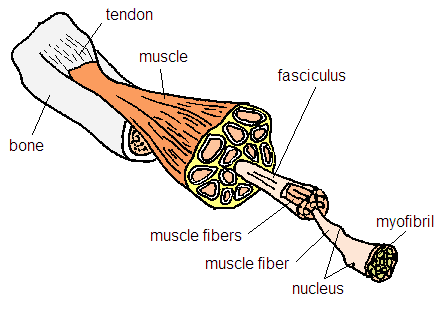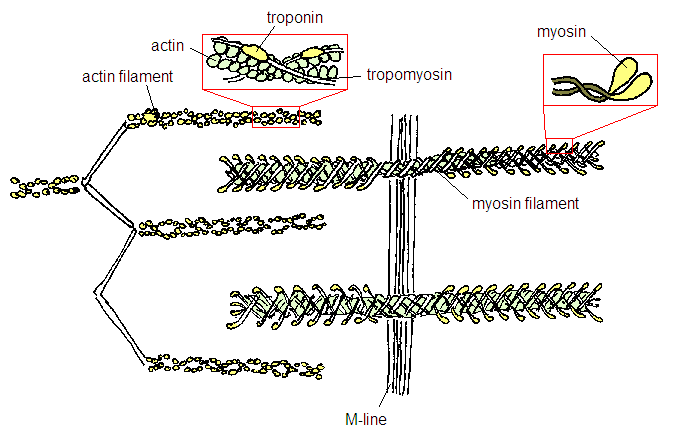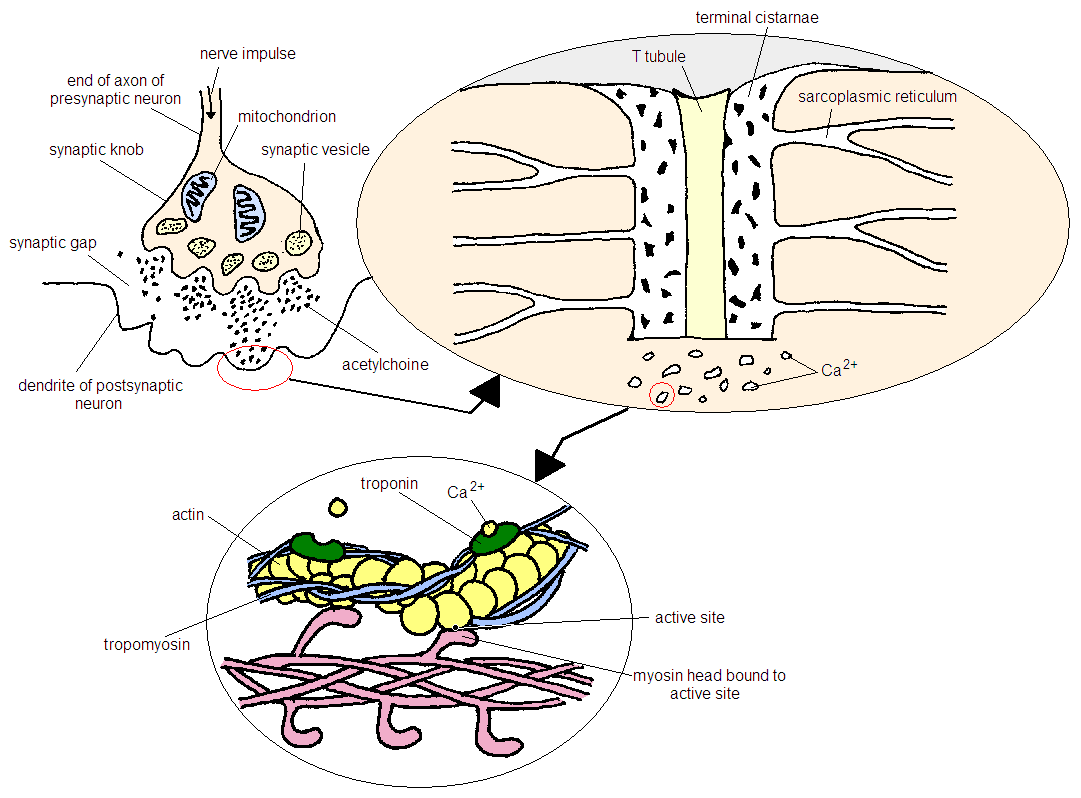
The human body would not be able to produce any movement without muscles. Skeletal muscles form an active part of the movement system and in athletes they constitute about 50% of their body weight. To understand the way these muscles contract, we first need to acquaint ourselves with their organization.
Muscle organization and structure
A muscle is attached to bone by tendon. It is composed of fascicles which is comprised of muscle fibres where one muscle fibre equals one muscle cell. The muscle cell forms the basic unit of the muscular system (Fig. 3). The muscle fibre is separated from neighbouring ones by the cell membrane, the so called sarcolemma containing the cytoplasm, i.e. the sarcoplasm. A sarcoplasm is composed of a major number of cell nuclei, mitochondria and contracting fibrous structures called myofibrils. Myofibrils are subdivided by Z lines into sections known as sarcomeres. Sarcomeres are made up of alternating sections of thick (myozin) and thin (actinin) myofilaments (Fig. 4).
Figure 3 Muscle structure

Figure 4 Filament arrangement inside sarcomere

Muscle functions
Nejdůležitější funkcí svalů je jejich kontrakce. Svalové kontrakce nám umožňují rozpohybovat naše tělo nebo jednotlivé segmenty.
Contraction (Fig. 5) is the most important function of muscle. Muscle contraction enables the human body to produce a movement, whether partial or overall. Muscle contraction is initiated in the Central Nervous System. As soon as the information on contraction is delivered from the nervous system, the sarcoplasmic reticulum starts releasing calcium ions (Ca+) which are transported to actin and bind to troponin. Myosin fibre then requires energy in the form of adenosine triphosphate (ATP) to produce contraction. During contraction the myosin heads drag along actin filaments and slide over them. Immediately after the action is finished the calcium based ions are transported back to the sarcoplasmatic reticulum where they are stored until the next contraction.
Figure 5 Formation of muscle contraction

Types of muscle contraction:
isometric contraction – muscle length not changed
concentric contraction – muscle gets shorter
excentric contraction – muscle gets longer
Muscle adaptation to workload
Muscles affected by workouts can adapt to workload. Endurance workouts develop the aerobic way of energy production in muscles. During this type of training muscle fibres get more blood and the number of mitochondria increases. The speed-strength training programme, on the other hand, results in hypertrophy of the fast muscle fibres and in increased supplies of muscle energy sources. Through adaptation to a specific training programme mature myocytes are able to produce the so called muscle plasticity where their fenotypical and metabolical profile including the organization of contractile proteines is altered.
Defunct and damaged muscle cells are replaced with the help of the so called satellite cells. When needed these se are shaped according to the nervous fibre type to which they will be attached to during the repair of the damaged muscle, or they fuse together and bind to muscle fibres in muscle hypertrophy (Máček, Radvanský, 2011).